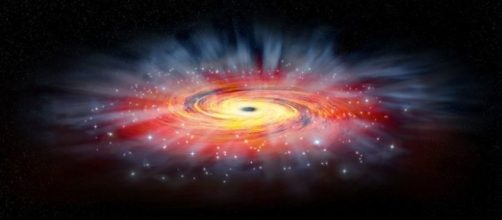An International team of astronomers and scientists have started the campaign to capture the first-ever image of a black hole. According to a report published on Space website, it has been learned that the campaign has begun on April 05, 2017, and it will run through April 14, 2017. The team is using a wide array of radio telescopes to capture the image of a gigantic black hole named "Sagittarius A" which is located at the center of the milky way. Scientists claim that the black hole can be felt, but cannot be seen. However, things will change as the team in the Event Horizon Development is using a system of sophisticated radio telescopes to get a first look at the gigantic hole.
Aiming to capture 'Point of No Escape.'
Researchers at the Event Horizon Development are seeking to capture Sagittarius A's event horizon, which is also known as 'point of no escape.' Beyond this point, nothing including light cannot escape. As a result, the interior of the black hole cannot be imagined, and this factor makes black holes the strangest entities in the Universe.
Gopala Krishnan, an Indian scientist, working at the University of Massachusetts Amherst is heading the team in this project. The astronomy research professor, through a recently issued statement, told that black holes are the most mysterious part of our universe, and thus many wild theories are surrounding them. He also added that the data from this project would reveal many unknown things about black holes.
Shep Doeleman, a space researcher at the Harvard-Smithsonian Center, told that due to its mysterious nature, trying to capture the image of a black hole is very similar to that of imaging a grape on the moon's surface.
The NewsHour quoted MIT astronomer Shep Doeleman as saying,“We’re trying to image a black hole, and those are some of the smallest objects in the universe. So you need the biggest telescope to observe the smallest object.”
Scientists are trying to take the first picture of a black hole and they're using an "Earth-sized" telescope to do it pic.twitter.com/YNaqCrYCCO
— BBC Newsbeat (@BBCNewsbeat) April 7, 2017
After Sagittarius A, it will be M87
After completing this project, researchers will try to capture the image of M87, which is 53.5 million light-years away from our planet.
The mass of this gigantic black hole is 6 billion times than that of the Sun, and as a result, its event horizon will be much bigger than Sagittarius A.
It is expected to take weeks or even months of work before we know if the project has been a success and the publication of their results is expected in the year 2018.

